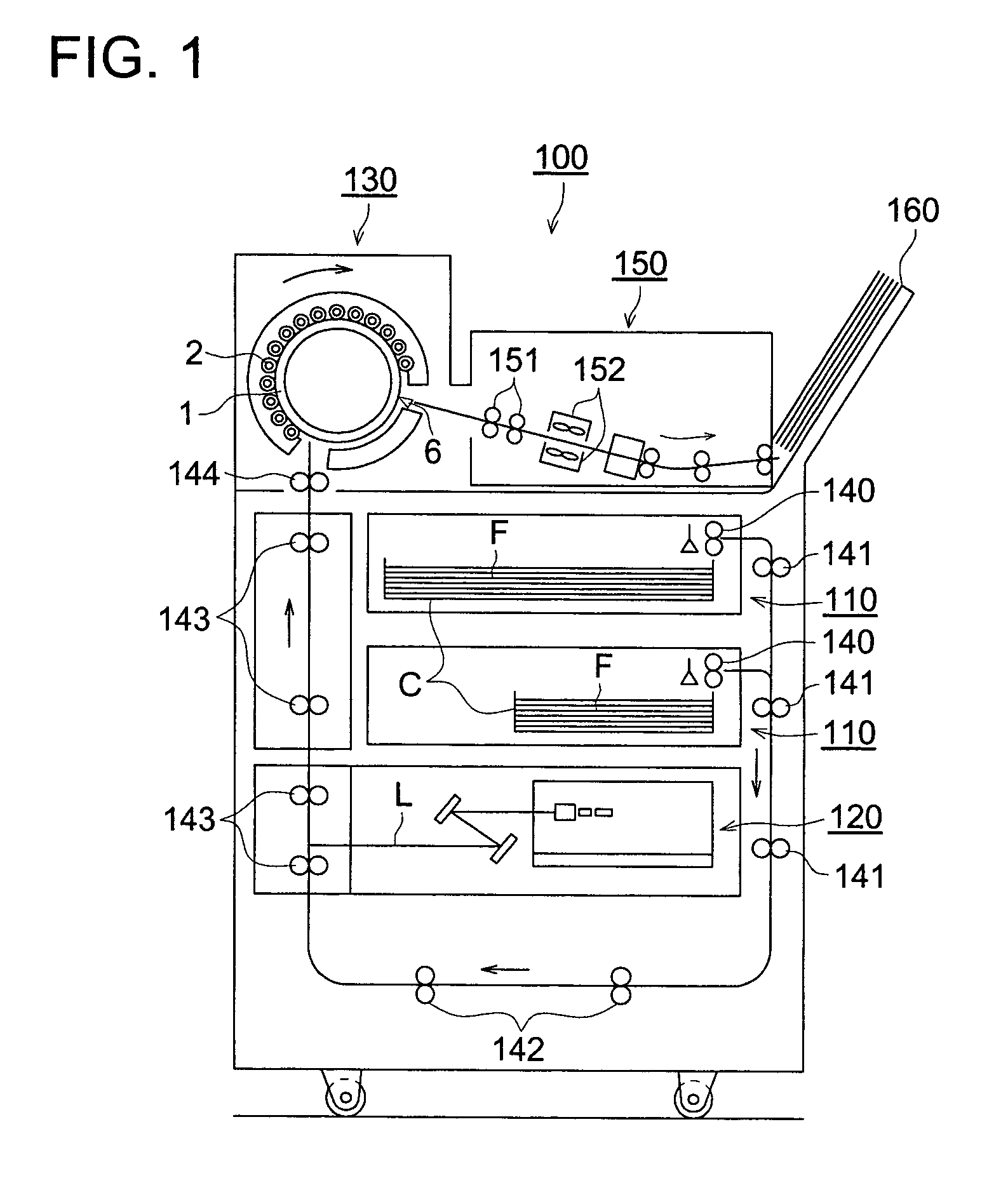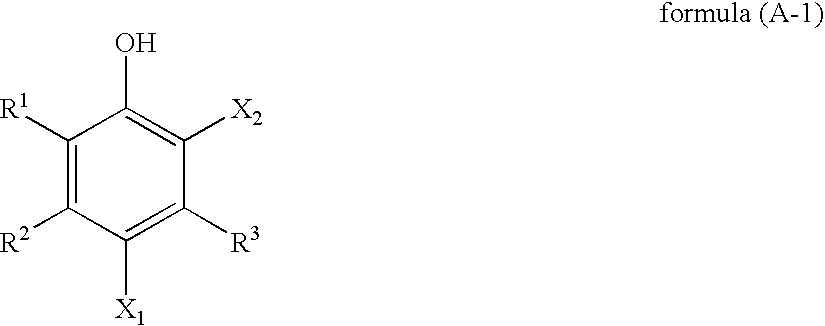Silver salt photothermographic dry imaging material
a technology of photothermographic and dry imaging, which is applied in the direction of auxillary/base layers of photosensitive materials, instruments, photosensitive materials, etc., can solve the problems of vitiating commercial values, uneven development and transportation, etc., and achieves reduced fog density, high image density, and minimized aging density change
- Summary
- Abstract
- Description
- Claims
- Application Information
AI Technical Summary
Benefits of technology
Problems solved by technology
Method used
Image
Examples
example 1
Preparation of Photographic Support
[0205]On one side of blue-tinted 175 μm thick polyethylene terephthalate film (PET) exhibiting a density of 0.170 which was previously subjected to a corona discharge treatment at 0.5 kV·A·min / m2, sublayer (a) was coated using the following sublayer coating solution A so as to have a dry layer thickness of 0.2 μm. After the other side of the film was also subjected to a corona discharge treatment at 0.5 kV·A·min / m2, sublayer (b) was coated thereon using sublayer coating solution B described below so as to have dry layer thickness of 0.1 μm. Thereafter, a heating treatment was conducted at 130° C. for 15 min in a heating treatment type oven having a film transport apparatus provided with plural rolls.
Sublayer Coating Solution A
[0206]Copolymer latex solution (30% solids) of 270 g, comprised of n-butyl acrylate / t-butyl acrylate / styrene / 2-hydroxyethyl acrylate (30 / 20 / 25 / 25%) was mixed with 0.6 g of compound (UL-1) and 0.5 g of methyl cellulose. Further...
example 2
[0250]Similarly to Example 1, photothermographic material samples were prepared as follows.
Preparation of Powdery Organic Silver Salt B
[0251]Similarly to the powdery silver halide-containing organic silver salt A in Example 1, powdery organic silver salt B was prepared, provided that 150.0 g of behenic acid, 20.0 g of arachidic acid and 17.3 g of stearic acid were mixed and dissolved in at 90° C. The content of silver behenate contained in the organic silver salt B, which was determined in accordance with the method described in Example 1, was 60% by weight.
Preparation of Powdery Organic Silver Salt C
[0252]Powdery organic silver salt C was prepared similarly to the powdery silver halide-containing organic silver salt A in Example 1, provided that, using commercially available high content behenic acid, 217.0 g of behenic acid, 20.0 g of arachidic acid and 17.3 g of stearic acid were mixed and dissolved in at 90° C. The content of silver behenate contained in the organic silver salt ...
example 3
[0262]Photothermographic material samples No. 301 through 320 were prepared similarly to samples No. 101 through 120 of Example 1 using the light-sensitive layer coating solution A and surface protective layer coating solution used in Example 1, except that the developer, 1,1-bis(2-hydroxy-3,5-dimethylphenyl)-3,5,5-trimethylhexane was replaced by a developer as shown in Table 4. In any of the samples, polymer P-1 was used as binder resin of the light-sensitive layer coating solution and the thermal transition point was adjusted to ca. 55° C. Development was carried out at a temperature of 125° C. and a transporting speed of 20 mm / sec. Results are shown in Table 4.
[0263]
TABLE 4ImageDensi-LastingtySam-PhotographicQualityUni-pleCompoundPerformanceDminDmaxImage Toneform-Re-No.(A-1)(A-2)(A-5)(A-3)(A-4)FogSDmax*2(%)(%)abR2itymark301————D-1*20.225100100167780.43−5.340.67CComp.302—2A-1——D-1*20.23510196178740.7−2.340.78DComp.303IA-1 ———D-1*20.23 10197167820.47−7.840.8CComp.304—2A-1——D-2*30.2...
PUM
| Property | Measurement | Unit |
|---|---|---|
| temperature | aaaaa | aaaaa |
| temperature | aaaaa | aaaaa |
| glass transition point | aaaaa | aaaaa |
Abstract
Description
Claims
Application Information
 Login to View More
Login to View More - R&D
- Intellectual Property
- Life Sciences
- Materials
- Tech Scout
- Unparalleled Data Quality
- Higher Quality Content
- 60% Fewer Hallucinations
Browse by: Latest US Patents, China's latest patents, Technical Efficacy Thesaurus, Application Domain, Technology Topic, Popular Technical Reports.
© 2025 PatSnap. All rights reserved.Legal|Privacy policy|Modern Slavery Act Transparency Statement|Sitemap|About US| Contact US: help@patsnap.com



